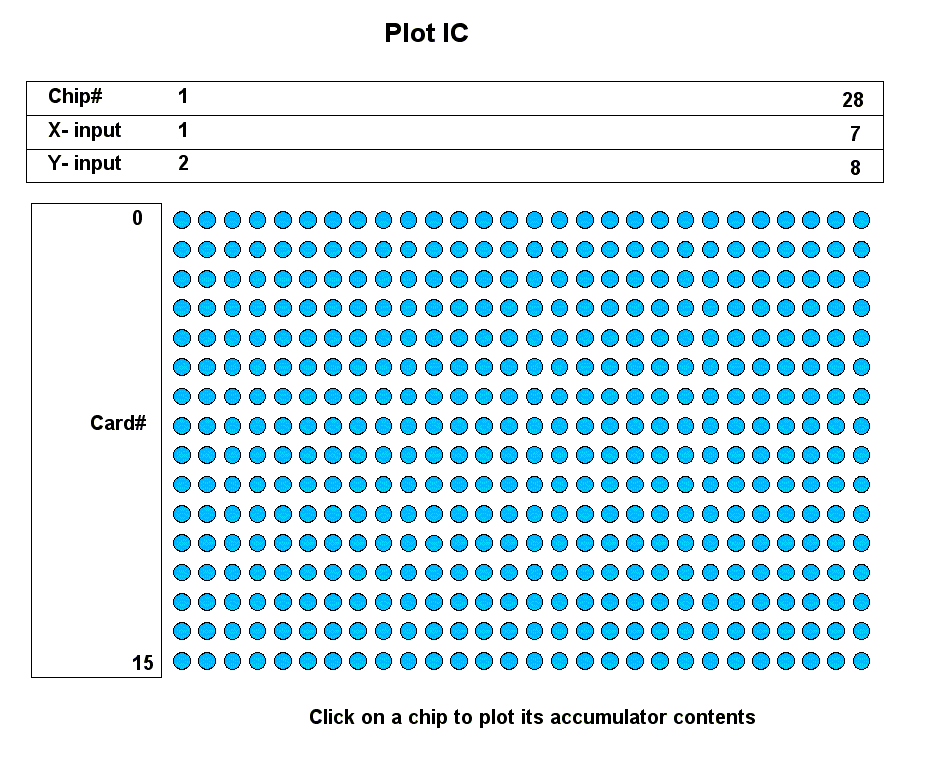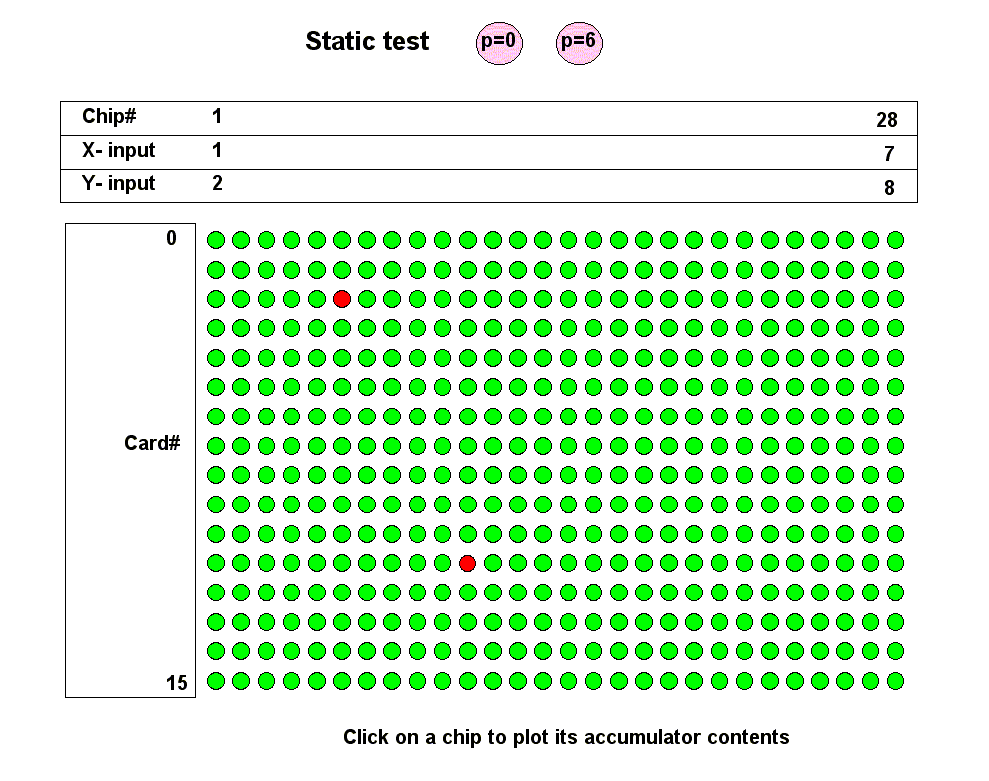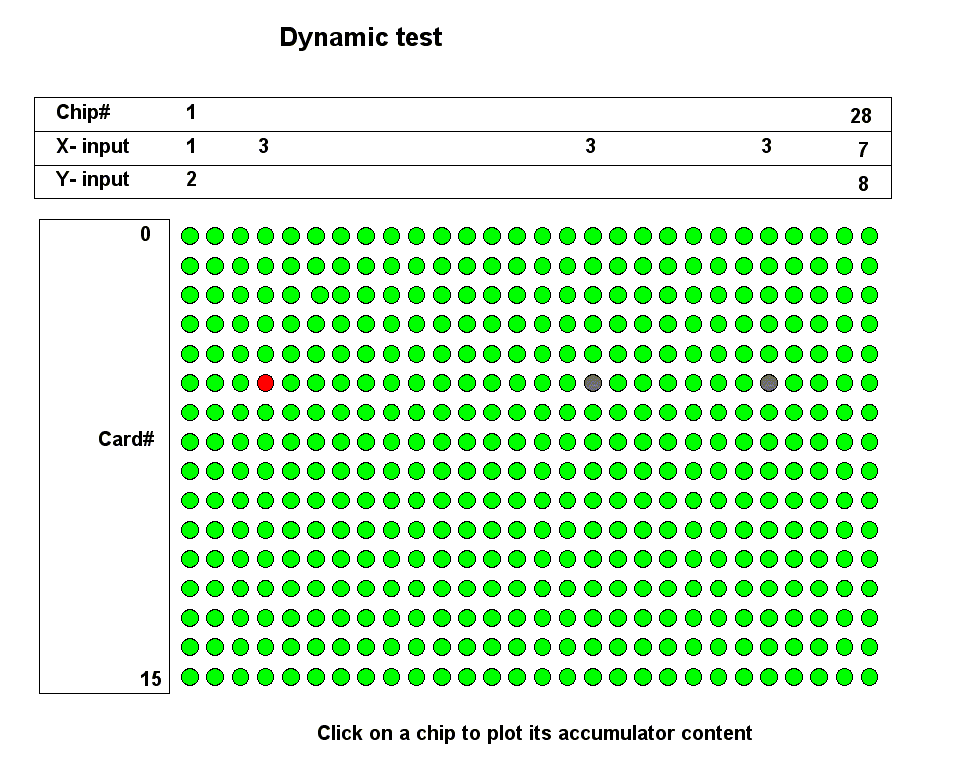Test 4 (correlator card) user
interface description
When test 4 page is activated from the main test menu, 3 options are
proposed:
1- Plot IC
When this option is selected, a matrix representing the 448 correlator
chips of the relevant unit is displayed. The correlator card wiring
table appears as a reminder.
When a chip is selected with the mouse and (double?) clicked, the
contents of the 2048 accumulators of that chip are plotted. Since
ordinary displays don't have enough resolution, a zooming feature
is implemented so as to quickly locate a suspect channel and to provide
its exact content ( 0 to 65535)
This feature is a read-only. It does not change the configuration of
the correlator.
The plot is refreshed as frequently as possible, minimum 5 frames per
second in order to locate intermittent connections. (data is available
32 times per second)
2- Static test
The user selects either p=0 or p=6 test. The chips are
configured consequently. All the accumulators should return either
00000 or 44000 (exact numbers TBD).
The software scans all the 917504 channels and red-flags the chips
containing (one or many) anomalous channels. The plot is refreshed 5
frames/sec minimum.
The picture below shows an example for chip6, card2 and chip11,
card12 having at least one anomalous channel.
When the user points at a particular chip ( e.g. a red -flagged
one) , the PlotIC function is activated for that chip.
3- Dynamic test
The correlator chips are configured in autocorrelation and their
inputs are directed to the backplane which delivers arbitrary signals.
According to the correlator card wiring table, there are 8 groups
of 3 or 4 chips doing the same job. All chips of a group
should deliver the same content, whatever that content is.
Groups not behaving so are grey-flagged. In case two or three
channels match, the different one is considered faulty and red-flagged.
The picture below show an example for chip3, card5 being
dynamically faulty.
When the user points at a particular chip ( e.g. a red -flagged
one) , the PlotIC function is activated for that chip. The plot is
refreshed 5 frames/sec minimum.



